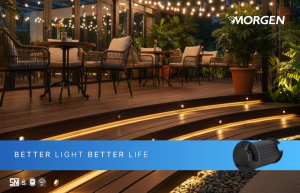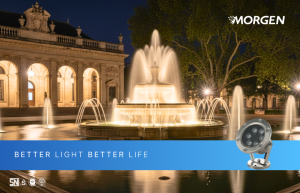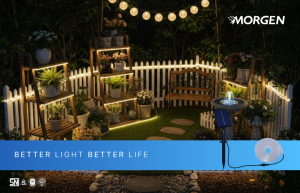Who doesn’t want their home to be bright with comfortable lighting? LED lights have become a favorite choice for many people because they are known for being energy-efficient and long-lasting. But have you ever bought an LED light only to feel disappointed because the brightness wasn’t what you expected? Or maybe the light stopped working after just a few months?
Mistakes in choosing LED lights often go unnoticed—many people buy them without considering important specifications, leading to regret later on. To help you avoid making the same mistakes, let’s go over the most common errors when choosing LED lights and how to avoid them.
1. Not Paying Attention to Light Color
One of the most common mistakes when choosing LED lights is ignoring the light color. LED lights come in various color options, such as warm white (3000K), natural white (4000K), and cool daylight (6500K). Choosing the wrong one can make a room feel too dim or too bright. Make sure to select the right light color based on your needs and comfort.
2. Ignoring Lumens and Only Focusing on Wattage
Many people still rely on wattage to determine a light’s brightness, but what really matters is lumens. Wattage only shows power consumption, while lumens indicate how bright the light actually is. The higher the lumens, the brighter the light. So, always check the lumens before making a purchase.
3. Not Checking the Lifespan and Durability
Another common mistake when choosing LED lights is not paying attention to their lifespan. High-quality LED lights typically last around 25,000 – 50,000 hours. If you buy cheap, low-quality LEDs, they may dim or stop working sooner than expected. Always check the product specifications before buying.
4. Choosing the Wrong Fitting Type
Another common mistake is selecting an LED light with an incompatible fitting. Each light has a different base, such as E27, GU10, G13, or GU5.3. If the fitting doesn’t match your existing socket, you might need to buy an extra adapter or even replace the lamp holder.
5. Not Checking the Color Rendering Index (CRI)
CRI (Color Rendering Index) measures how accurately a light source displays colors. If the CRI is too low, colors may look dull or unnatural. For better lighting quality, especially for activities like reading or working, choose LED lights with a CRI of at least 80.
6. Ignoring IP Ratings for Outdoor Lights
If you need LED lights for outdoor areas like gardens or garages, make sure they have an IP65 rating or higher to withstand dust and water. Many people overlook this detail and end up regretting it when their lights get damaged due to rain or high humidity.
Choosing LED lights isn’t just about price—it’s also about quality and suitability for your needs. By avoiding these common mistakes, you can enjoy comfortable, long-lasting, and energy-efficient lighting.
So before you buy, consider these factors to make the right choice. Check out Morgen’s best LED light collection and find the perfect lighting solution for your home or business!







